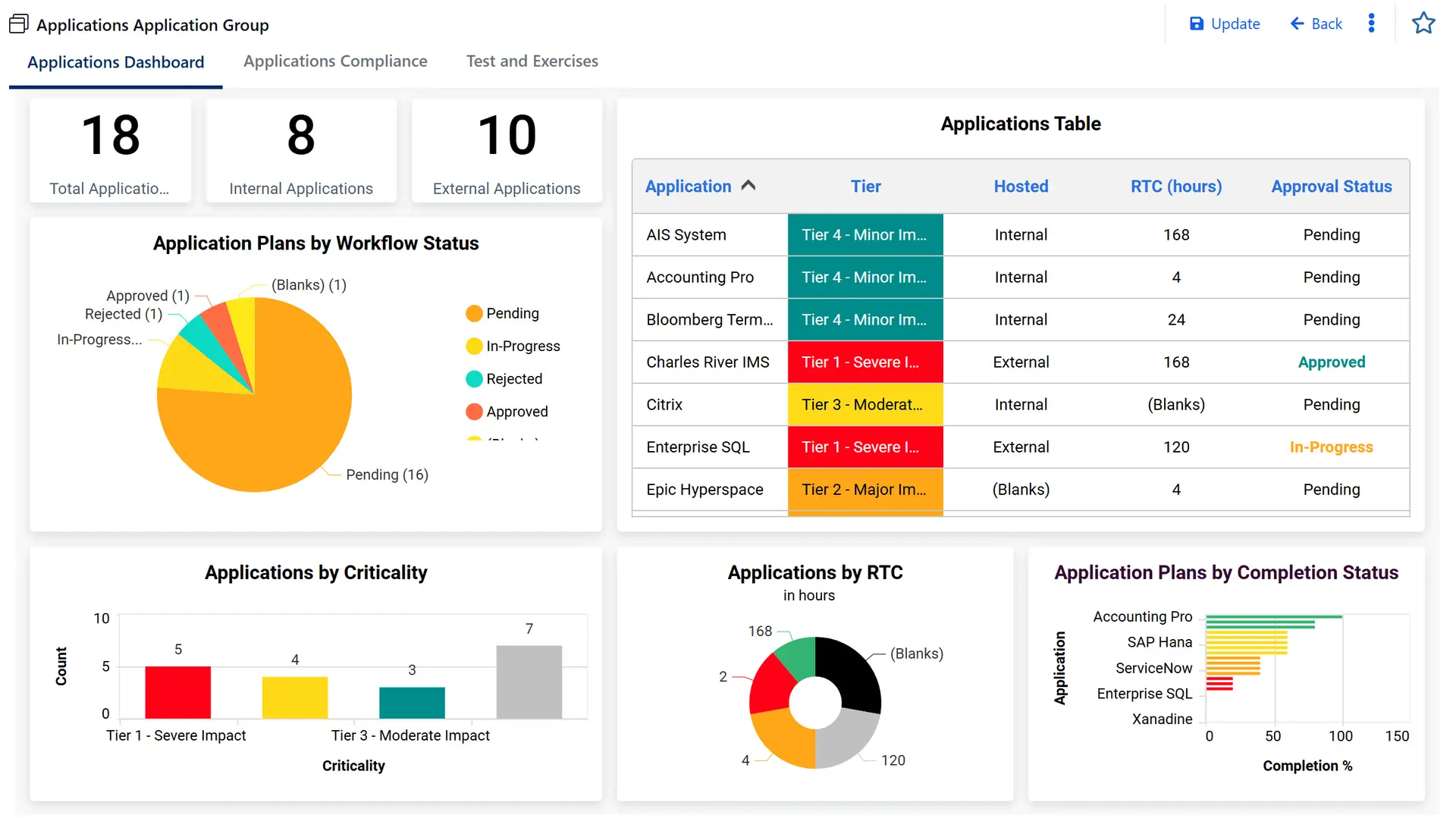SOLUTION
Disaster Recovery
Safeguard infrastructure with resilience and recovery solutions that ensure systems stay available and secure.

Resilient Infrastructure
Build and maintain disaster recovery plans using a no-code, self-service interface.
Define critical systems, dependencies, and recovery objectives with easy configuration.
Automate testing workflows and schedule recovery plan exercises with full audit trails.
“Our business is global and changes daily. The ability to easily move plans and folders within CLDigital with no coding saves us a ton of time every year.”
Chief Information Officer
- Large Insurance Company (UK)
“CLDigital gave us real-time visibility and control, bringing risk and compliance into one coherent view.”
Chief Risk Officer
- Global Financial Institution (UK)
“We replaced dozens of spreadsheets and legacy systems with one intuitive dashboard with no code required.”
Enterprise Risk Manager
- U.S. Healthcare Organization
Faster Recovery
Track recovery readiness and gaps with real-time dashboards and reporting.
Assign roles and responsibilities to ensure coordinated response during disruptions.
Launch faster with prebuilt templates and achieve compliance with minimal overhead.

See the platform in action with a guided walkthrough.
BENEFITS
Digital Safeguards
Rapid Recovery
Reduce Downtime Impact
Standards & Compliance
FAQ
Solution FAQs
What is Technology Resilience & Disaster Recovery?
What are the key functionalities of Technology Resilience & Disaster Recovery?
What are the benefits of Technology Resilience & Disaster Recovery?
What are the challenges of Technology Resilience & Disaster Recovery?
GET STARTED
Let's Connect
Discover how our platform can help you achieve better outcomes and you prepare for what’s next in risk and resilience.